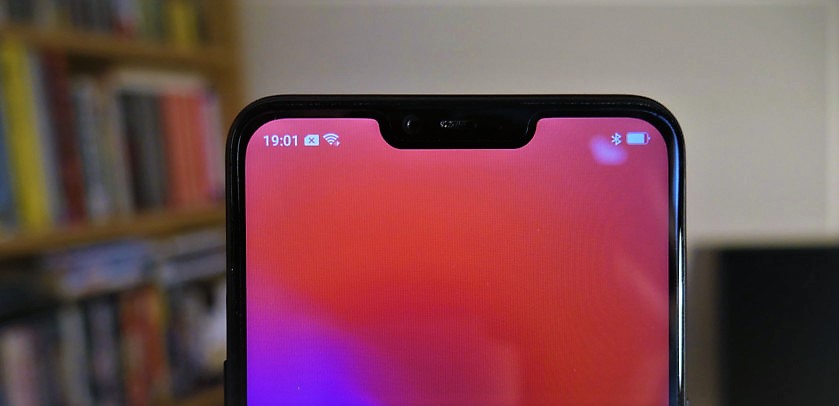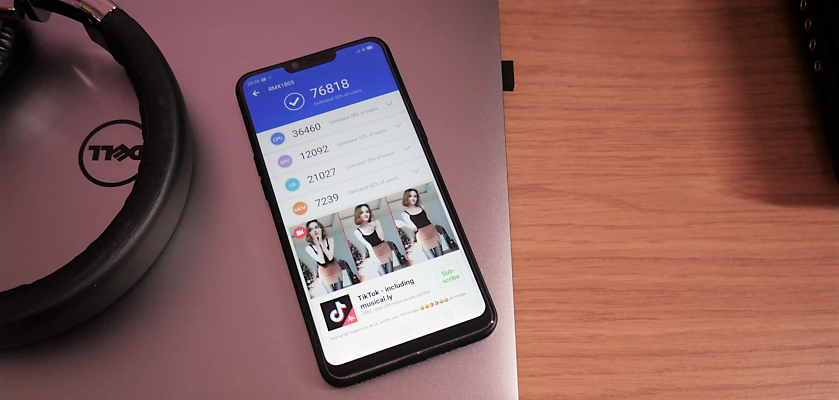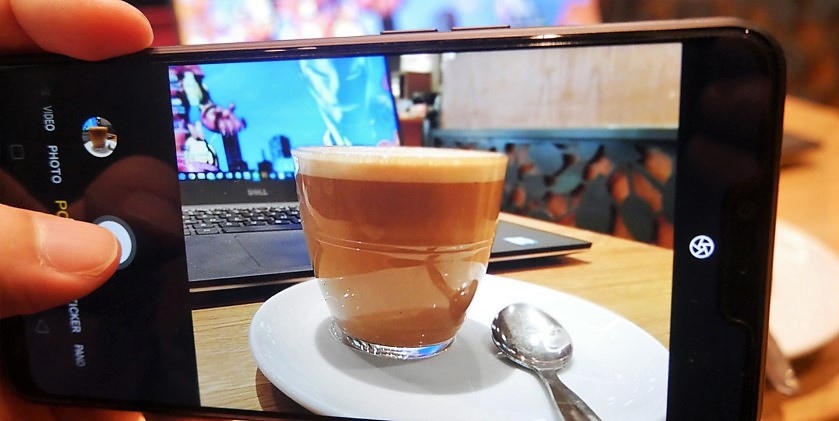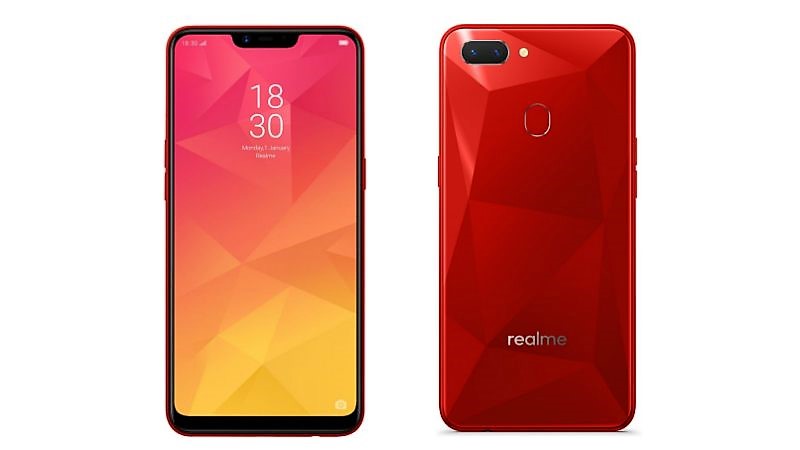It’s only been around three months since the Realme 1, and yet here we are through the Realme 2 — an iterative update to an extremely affordable device, bringing some extra features without inflating the price much. However, for each step forward, the phone takes an additional step back. This device removes as various features as it adds!
Realme has now broken absent to become its own brand. For its entrance it kept the price the exact same as the previous model, thus requiring more compromises for a phone previously all about compromise. Let’s take a look at the $130 handset in this Realme 2 review and see what just is going on here.
Realme 2 Design

The very plasticky build and the interesting polygonal consequence adorning the rear of the phone have continued the same. I said in my Realme 1 review this looked much improved in photos than in person, and this time around the consequence seems even understated. Every now and then it catches the light and carries out the pattern, but most of the time it looks like a glossy black finish. It’s certainly not a killer design feature, but on an otherwise unremarkable, cheap phone, it’s still a welcome presence.
Realme 2 lighting effect
The branding around the rear is now a little less affected (a big win), and there are a dual-lens camera and a fingerprint sensor.
Another exciting design choice this around is the presence of a notch. Many of you just clenched interpretation that, but I actually quite like it (interestingly, this feature appeared to have been cut last minute from the first Realme based on early renders).

It’s not that I like notches — I’m not truly a big fan — but a notch can make a phone look a little more 2018. Cheap phones don’t frequently get to have modern design features, so having a notch here just makes the phone look and feel a little less like a cooperation. It’s interesting to see a notch on a phone this inexpensive, basically.
However, there is one more very big concession here in the form of a lower-res screen. The Realme 2 derives with a 720 x 1,520 screen. This isn’t hugely obvious until you put it next to a device with a high-pitched screen (especially a punchy AMOLED). That’s when you actually notice the difference and even the white’s appearance murkier than last time around. If you lean in nearby, you can even see separate pixels.
Realme 2 media consumption
Obviously, this isn’t actually a media ingesting device. It can consume media (nom nom) but the lack of acuity combined with a very sub-par single speaker mean it’s not mainly good at it. This really doesn’t sound good when you original it up. You surely won’t want to listen to much Spotify without by means of the headphone jack (which is thankfully present and correct).
The rest of the time it’s fine — the Nintendo key is 720p after all and most people don’t have a problem with it. It just doesn’t make a ton of sense to increase the size of the display to 6.2 inches and hit an 80.85 percent screen-to-body ratio through the notch, only to then make the screen actually less sharp.
Realme 2 screen

The phone’s design is still actual clearly cutting corners to save money. The plastic build is actually noticeable, and the seam running around the side is even inferior. The keys are both oddly placed and mushy. Separate volume buttons continuously give me the heebie-jeebies.
I wouldn’t imagine a water-resistant, unibody, glass, and metal structure at this price. For what you’re paying, this is about as decent as it gets. I’m just letting you know what to expect.
Realme 2 performance and software

The design got a bit of an advancement, but the internals has truly taken a small step backward.
We’ve gone from a MediaTek to a Snapdragon, which you would usually imagine being a good thing. Unfortunately, it’s the rather underpowered Snapdragon 450.
The original Realme 1 was not precisely a rapidity demon, but for day-to-day use, you could generally get by. It would even be good for a moment of light gaming. This time around imagine things to chug a little. You’ll understand the odd impediment as you navigate with the browser. Apps take an extended time to open. 3D games will involvement skipped frames and occasional slow-down. You can still play something like Asphalt 8, but you’re going to involve a fair few stutters on low settings. The Adreno 506 does okay with 2D games, however, but don’t get this for gaming!
AnTuTu benchmark scores weren’t decent. The Realme 2 only beaten 20 percent of users, compared with the 38 percent achieved by the Realme 1.
Realme 2 benchmarks

I found performance meaningfully improved than the Honor 7S sporting the MediaTek MT6739 processor. That phone was just… urgh.
This is a handy phone, it’s just not countless. That’s a big shame seeing the Realme 1 was really better than I anticipated. This device wreaks of missed opportunities.
What’s unfortunately not helping substances either is the software, which is everyone’s favorite Color OS. I’m sure it’s really someone’s favorite anywhere, but it sure isn’t mine. There are worse offenders out there in the bloat subdivision, but it felt like I was constantly aggressive against this UI. Being unable to dismiss announcements before they’re prepared to leave of their own accord is simply obnoxious, and finding out how to alteration the default launcher took lengthier than it should (thankfully it’s doable though). Why are so many dialogues boxes lime green on white? Who perhaps thinks that’s a good color scheme?!
Realme 2 home screen
I’m challenging the 3GB/32GB model, but you can also become 4GB/32GB and 4GB/64GB. None of these configurations is everything to write home about, but they’re all flawlessly serviceable and RAM organization hasn’t been a bottleneck for me.
Perhaps the most imposing aspect of this phone from a hardware viewpoint is the battery. At 4,230mAh, that is an important upgrade over the Realme 1’s 3,410mAh, and also a whopping great battery by any standards. Combined with the low-res screen, the battery has eccentric staying power and will effortlessly see you through a day of even heavy use. Honestly, this is among the best permanency you will get from any phone. It’s a convincing backup for portable and the like when you factor in the cost as well.
Realme 2 camera and features

While the Realme 2 takes some astonishing steps backward in some divisions, the camera is essentially a bit nicer. The dual lens camera associations a 13MP f2.2 lens with a 2MP secondary depth sensor for bokeh. Around the forward-facing is an 8MP selfie lens, which is also talented of portrait effects, despite losing the NPU found in the Helio P60 from the Realme 1.
The only change here is the subordinate lens, which seemingly should only come into play with depth consequence shots. However, it felt like the shots I achieved with this camera were slightly superior. Perhaps the second lens lets in a bit lighter? Maybe it permits for better post-processing. Perhaps it’s a software apprise. Whatever the case, photos seemed a little more contrast to me. The inventive camera was never that bad assumed the price anyway.
Obviously, this is no Pixel or Galaxy. Irregularly I found images to observed a little blurry due to the lack of steadying. Colors are washed out. It falls apart in even somewhat lower light (with lots of noise), and background detail gets lost in a lot of pictures too. However, it still achieves perhaps healthier than you might imagine overall. There are even a couple of fun choices like AR and time-lapse in the app.
Other features here all work fine too. The fingerprint sensor is actually fast, and the face unlocking is actually good — better than even some much more luxurious implementations. The fingerprint sensor is really worth mentioning because the Realme 1 lacked the feature. With face unlock not quite secure sufficient for things like PayPal, this was actually a thoughtful omission.
Realme 2 review: Closing comments

I’m in a weird situation. I still think Realme is offering a countless value phone here. It definitely leaps and limits better than the Honor 7S. I’m less sure whether this is improved than the Realme 1. While the subordinate lens is nice, the only tangible benefit you get from that is bokeh — something the Realme 1 previously did. The bigger screen is cool too, but it’s lower determination and notch mean it isn’t really an unqualified win.
Really the fingerprint sensor and the battery life enhancements are the two really exclusively positive enhancements here, though the Realme 1 had no difficulties in the battery department nevertheless. It feels like two steps forward and at slightest two steps back, especially considering the same cheap design and use of MicroUSB. It’s so strange this self-proclaimed “successor” would force you to make so negotiations to get those new features.
If it had just reserved the precise same internals and screen as last time, this would have remained a really compelling expedient for the price assortment. As it is, it’s a bit of a curiosity.
Those of us with less expenditure power at least deserve upgrades to still truly upgrade our phones
I get it’s a cheap phone, but those of us with less expenditure power still need upgrades that actually upgrade our phones, right?
If you have $100-$150 to spend, then a Realme phone is a decent selection. Which one you pick is a tougher question, and really be contingent on what you value.













